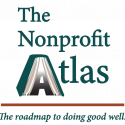Why Fundraising Isn’t About The Ask—It’s About The Relationship

If you Google “fundraising strategy,” chances are you’ll be flooded with event templates, gala planning guides, and donor tier charts. While these tools may serve a purpose, they only scratch the surface of what truly successful fundraising looks like.
The truth is, nonprofit fundraising has become far too transactional. Many organizations claim they want to prioritize relationships with donors, but few actually put that into practice—or know how to.
It’s time for a shift—not a radical reinvention, but a practical change in mindset.
Fundraising That Feels Familiar—Because It Is
When nonprofit leaders hear about relationship-based fundraising, the initial reaction is often hesitation: “That sounds like a big change.” But when the idea is broken down, the response tends to shift to: “Oh, that’s just how I treat people in real life.”
Exactly. Because at its core, good fundraising mirrors how we naturally build trust in all areas of life. We don’t ask someone to invest in us—whether with money, time, or belief—without first building a relationship. The same goes for fundraising.
What Is Relationship-Based Fundraising?
This approach isn’t just feel-good fluff—it’s a strategy rooted in trust, patience, and long-term vision. Here’s what it looks like in practice:
Build Trust Over Time: Forming authentic relationships can take 12 to 24 months before a donor feels ready to give their best gift.
Respect the Process: Donor development isn’t stalling—it’s strategic nurturing.
Engage in Genuine Conversation: Ditch the “fundraiser voice” and just talk like a human being.
Reach Out Without an Ask: Consistent, no-strings-attached communication builds deeper connection.
Make the Ask a Natural Step: A well-timed ask should feel like the next logical move, not a jarring pitch.
Too often, fundraisers fall back on quick fixes—grant applications, flash campaigns, or urgent deadlines—because they haven’t built the muscle to lead meaningful, investment-level donor conversations. But a transactional mindset keeps organizations stuck in a cycle of uncertainty.
The Donor Pipeline: Your Relationship Roadmap
Playing the long game doesn’t mean winging it. You need infrastructure—a donor pipeline that tracks where relationships stand and how they’re progressing.
Without it, fundraising becomes frantic. Pressure builds. You rush asks and strain relationships. But with a healthy, well-managed pipeline, confidence replaces anxiety. You’re not relying on one donor to save the day; you’re nurturing dozens of connections across different stages.
What Happens When You Lead with Relationships?
Switching to a relationship-first strategy has ripple effects across the organization. Here’s what you’ll notice:
Strategic Alignment: Your fundraising goals sync with your long-term vision—not just your next event.
Increased General Operating Support: Strong relationships allow for deeper conversations about the real needs of your organization, like staff, systems, and tech—not just programs.
Stable Cash Flow: Diversified support reduces dependence on a single funding source, evening out your revenue throughout the year.
Higher-Value Donors: Major donors want meaningful partnerships, not another gala invite.
Sustainable Growth: With the right culture and systems in place, your team can raise more and fund your mission all year round—not just during campaign season.
A Culture Shift, Not Just a Strategy Swap
Relational fundraising isn’t something you tack on to your existing plan—it is the plan. To make it work, you need to build a culture that supports it:
Leadership must model relationship-building.
Teams need training in relational intelligence, not just pitch tactics.
Metrics should reward long-term engagement, not short-term wins.
This approach isn’t complex. It’s practical—and when embraced, it becomes second nature.
From Chasing to Inviting
Too many nonprofits are chasing dollars instead of inviting donors into something bigger. When you slow down, lead with purpose, and nurture trust, fundraising becomes less about urgency and more about alignment.
Because at the end of the day, the best fundraising doesn’t come from who you chase—it comes from who you bring along for the journey.
Source: Forbes
The Nonprofit Atlas connects the dots for any “do-gooders” to do the most good. We provide the roadmap to doing good well. We simplify the work of securing resources, relationships, and best practices that fuel a mission and realize a vision. See us in action with a FREE 30-minute consultation.
